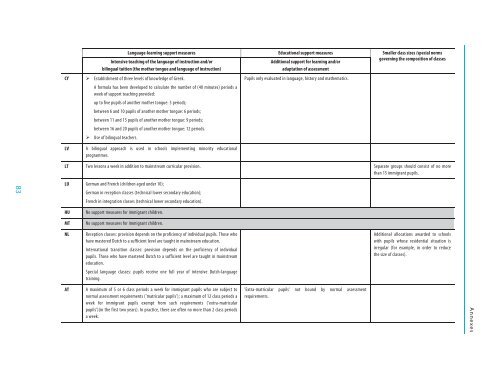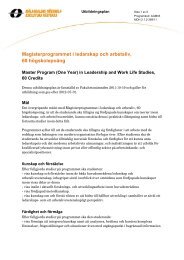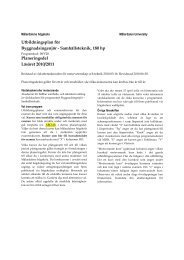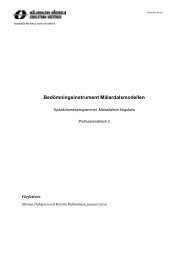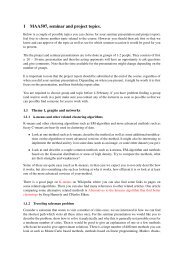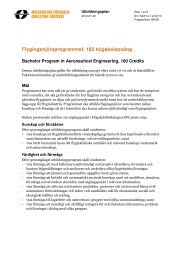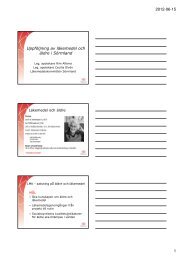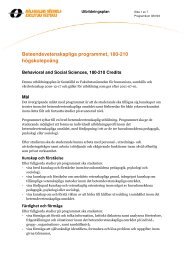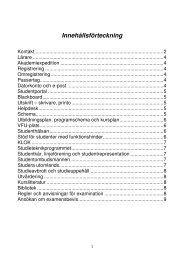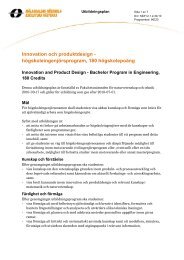Integrating Immigrant Children into Schools in Europe
Integrating Immigrant Children into Schools in Europe
Integrating Immigrant Children into Schools in Europe
Create successful ePaper yourself
Turn your PDF publications into a flip-book with our unique Google optimized e-Paper software.
Language-learn<strong>in</strong>g support measuresIntensive teach<strong>in</strong>g of the language of <strong>in</strong>struction and/orbil<strong>in</strong>gual tuition (the mother tongue and language of <strong>in</strong>struction)Educational support measuresAdditional support for learn<strong>in</strong>g and/oradaptation of assessmentSmaller class sizes /special normsgovern<strong>in</strong>g the composition of classesCYEstablishment of three levels of knowledge of Greek.A formula has been developed to calculate the number of (40 m<strong>in</strong>utes) periods aweek of support teach<strong>in</strong>g provided:up to five pupils of another mother tongue: 3 periods;between 6 and 10 pupils of another mother tongue: 6 periods;between 11 and 15 pupils of another mother tongue: 9 periods;between 16 and 20 pupils of another mother tongue: 12 periods.Use of bil<strong>in</strong>gual teachers.Pupils only evaluated <strong>in</strong> language, history and mathematics.LV A bil<strong>in</strong>gual approach is used <strong>in</strong> schools implement<strong>in</strong>g m<strong>in</strong>ority educationalprogrammes.LT Two lessons a week <strong>in</strong> addition to ma<strong>in</strong>stream curricular provision. Separate groups should consist of no morethan 15 immigrant pupils.83LU German and French (children aged under 10);German <strong>in</strong> reception classes (technical lower secondary education);French <strong>in</strong> <strong>in</strong>tegration classes (technical lower secondary education).HUMTNLNo support measures for immigrant children.No support measures for immigrant children.Reception classes: provision depends on the proficiency of <strong>in</strong>dividual pupils. Those whohave mastered Dutch to a sufficient level are taught <strong>in</strong> ma<strong>in</strong>stream education.International transition classes: provision depends on the proficiency of <strong>in</strong>dividualpupils. Those who have mastered Dutch to a sufficient level are taught <strong>in</strong> ma<strong>in</strong>streameducation.Special language classes: pupils receive one full year of <strong>in</strong>tensive Dutch-languagetra<strong>in</strong><strong>in</strong>g.Additional allocations awarded to schoolswith pupils whose residential situation isirregular (for example, <strong>in</strong> order to reducethe size of classes).ATA maximum of 5 or 6 class periods a week for immigrant pupils who are subject tonormal assessment requirements ('matricular pupils'); a maximum of 12 class periods aweek for immigrant pupils exempt from such requirements ('extra-matricularpupils')(<strong>in</strong> the first two years). In practice, there are often no more than 2 class periodsa week.'Extra-matricular pupils' not bound by normal assessmentrequirements.Annexes


